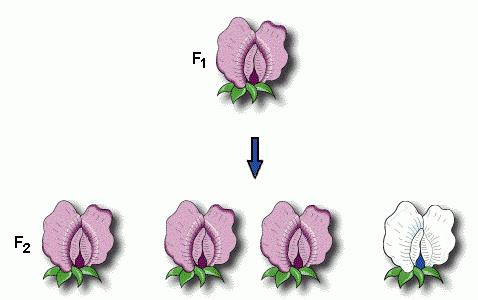The fact that all living organisms, ranging from amoeba to human species, have a cellular structure, is well known. However, not everyone thinks about how the emergence of new creatures occurs, according to what laws of nature certain attributes are inherited. So, maybe it's time to refresh the basics of genetics, which are most important for the evolution of science, forgotten from the school biology course?
The meaning of genes
Living cells are based on genetic material - nucleic acids, consisting of repeating nucleotides, which, in turn, are represented by the sum of a nitrogenous base, a phosphate group and five-carbon sugar, ribose or deoxyribose. Such sequences are unique, therefore in the world there will not be two completely identical living beings. However, the set of genes is far from random, and it comes from the mother cell (in organisms with asexual type of reproduction) or both parental (with sexual type). In the case of humans and many animals, the final grouping of genetic material occurs at the time of formation of the zygote due to the fusion of female and male germ cells. In the future, this set also programs the development of all tissues, organs, external features and partially even the level of future health.
Key Terms
Perhaps the most important concepts of genetics as a science are heredity and variability. Thanks to the first phenomenon, all living organisms continue their species and support world populations, and the second helps to evolve by adding new signs and crowding out those that have lost their significance. Gregor Mendel, an Austrian botanist and biologist who lived and worked for the good of science in the second half of the 19th century, discovered all this and laid the foundations of genetics . He discovered the laws of his theory of heredity through qualitative analysis and experiments on plants. In particular, he used peas most often, since it was easy to isolate the allele in it. This concept means an alternative trait, that is, a unique nucleotide sequence that gives one of two variants of the manifestation of the trait. For example, red or white flowers, long or short tail, and so on. However, among them it is worth distinguishing other important terms.
Mendel’s first law
Dominant (dominant, predominant) and recessive allele (suppressed, weak) are two signs that influence each other and appear according to certain rules, and more precisely, according to the laws of Mendel. So, the first of them says that all hybrids received in the first generation will carry only one trait received from parental organisms and prevailing among them. For example, if the dominant allele is the red color of the flowers, and the recessive is white, then when two plants with these signs are crossed, we will get hybrids with only red flowers.

Such a law is true if the parent plants are clean lines, that is, homozygous. However, it is worth pointing out that in the first law there is a small amendment - coding of attributes, or incomplete dominance. This rule suggests that not all signs have a strictly predominant effect on others, but can occur simultaneously. For example, parents with red and white flowers have a generation with pink petals. This is because although the dominant allele is red, it does not have a complete effect on recessive, white. And therefore, a third type of color appears due to a mixture of signs.
Mendel’s second law
The fact is that each gene is indicated by two identical letters of the Latin alphabet, for example, “Aa”. In this case, the capital one means the dominant sign, and the small one is recessive. Thus, homozygous alleles are designated “aa” or “AA”, because they carry the same trait, and heterozygous alleles are “Aa”, that is, they carry the rudiments of both parental traits.

Actually, this was the basis for the following Mendel’s law - on the splitting of signs. For this experiment, he crossed two plants with heterozygous alleles obtained in the first generation of the first experiment. Thus, he received a manifestation of both signs. For example, the dominant allele is purple flowers, and the recessive one is white, their genotypes are “AA” and “aa”. When crossing them in the first experiment, he received plants with the genotypes "Aa" and "Aa", that is, heterozygous. And when you get the second generation, that is, "Aa" + "Aa", we get "AA", "Aa", "Aa" and "aa". That is, both purple and white flowers appear, moreover, in a ratio of 3: 1.
Third law
And Mendel’s last law is on the independent inheritance of two dominant attributes. It is easiest to consider using the example of crosses between different varieties of peas - with smooth yellow and wrinkled green seeds, where the dominant allele is smoothness and yellow.
As a result, we get different combinations of these characters, that is, similar to the parent, and in addition to them - yellow wrinkled and green smooth seeds. In this case, the texture of the peas will not depend on their color. Thus, these two traits will be inherited without influencing each other.